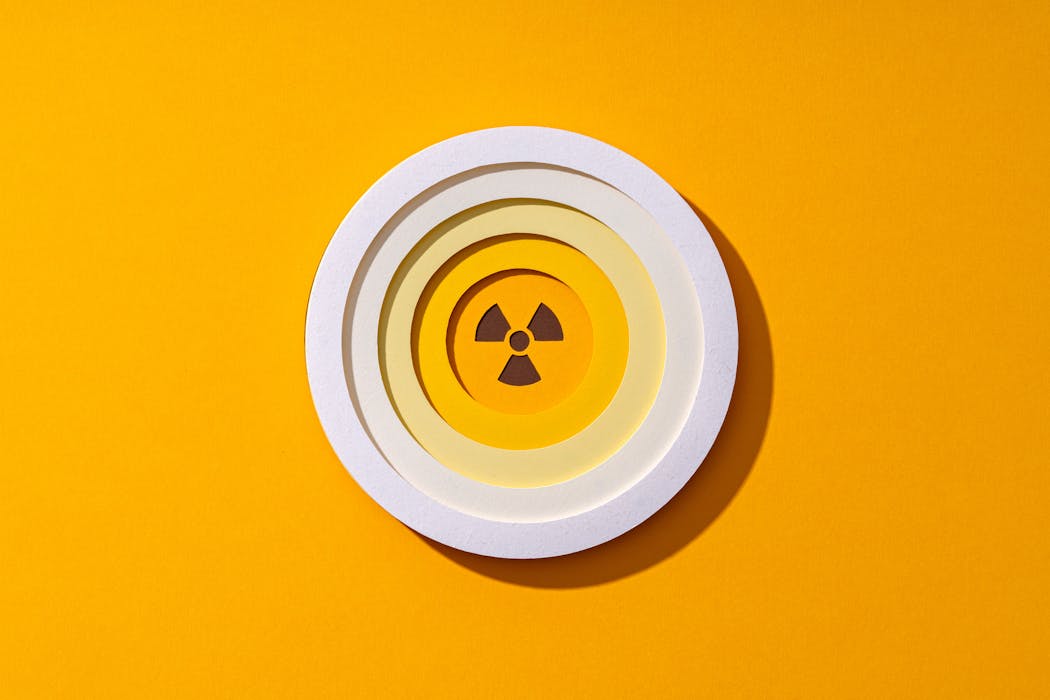Why are elements like radium dangerous? A chemist explains radioactivity and its health effects
- Written by Kelling Donald, Professor of Chemistry, University of Richmond

Interestingly, it is possible for atoms of the same element to have different numbers of neutrons. Atoms of the same element with different numbers of neutrons are called isotopes. For instance, two carbon atoms would each have six protons, but one might have six neutrons while another could have seven or eight.
The number of protons and neutrons packed together in the nucleus determines whether the nucleus of an isotope is stable or not. If the nucleus is not stable, problems can arise.
Radioactive decay
The nucleus of each atom wants to be stable, but only certain arrangements of protons and neutrons make that possible[9]. The number of protons and neutrons do not have to be equal, but some combinations make for a happy, or stable, coexistence in the nucleus while others don’t.
A nucleus with an unhappy mix of protons and neutrons might break down or deteriorate in some way. That process is called radioactivity or radioactive decay[10].
That radioactive decay process releases some form of radiation from the nucleus[13]. This radiation can take the form of tiny particles moving rapidly[14] or high-energy electromagnetic waves[15] emerging from the nucleus. It is that radiation – the high-energy particles and waves shooting out from the nucleus of unstable atomic nuclei – that can make you sick.
There are different types of radioactive decay[16]. In one case, an atom decays by kicking out a small fragment of itself that is made up of two protons and two neutrons. Since the number of protons determines what element we have, decay that changes the number of protons in an atom turns it into a different element.
Radioactive decay can be quite slow, though. It can take thousands of years for one element to decay into a different one.
The case of radium
All radium atoms are unstable[17] and radioactive. Many of these isotopes decay very quickly, but Ra-226, which has 138 neutrons and 88 protons and is the most common, decays the slowest[18]. It takes 1,600 years for half a sample of Ra-226 to decay.
As Ra-226 decays, it loses two protons and two neutrons, which turns it into an isotope of radon[21]. Then the radon decays, and the atom eventually reaches a stable form as the element lead. Each step in that decay series[22] releases more nuclear radiation.
Some other elements in nature with no stable isotope[23] are technetium, polonium, actinium and uranium.
Effects on the human body
The nuclear radiation emitted[24] when radium and other elements decay can damage the cells in the human body. It can lead to cancers or other health problems[25].
Whether you’re exposed to a lot of radiation quickly, like making the mistake of walking around for a few hours with radioactive material in your pocket[27], or you’re exposed to just a little over a long time[28], the high-energy particles and electromagnetic waves from nuclear radiation can lead to serious health problems[29], including burns and cancers[30].
Remarkably, even though radioactivity is a threat to life, scientists can control and use it[31] to diagnose and treat[32] diseases – including cancers[33]. If the radiation is delivered precisely to where cancer cells are, the radiation can destroy those rogue cells wreaking havoc in the body.
People who work professionally with radioactive materials need to follow strict guidelines and procedures[34] to protect themselves. They use special shields and radiation detectors, and they minimize the amount of time they’re exposed to any radioactivity.
Pierre and Marie Curie, who discovered radium[35] in 1898, suffered some of the negative effects of radioactivity. Pierre experienced radioactive burns[36], and Marie died from a blood disease likely caused by chronic radiation exposure[37]. Over 100 years later, her notebooks are still radioactive[38].
Hello, curious kids! Do you have a question you’d like an expert to answer? Ask an adult to send your question to CuriousKidsUS@theconversation.com[39]. Please tell us your name, age and the city where you live.
And since curiosity has no age limit – adults, let us know what you’re wondering, too. We won’t be able to answer every question, but we will do our best.
References
- ^ Curious Kids (theconversation.com)
- ^ CuriousKidsUS@theconversation.com (theconversation.com)
- ^ As a chemist (chemistry.richmond.edu)
- ^ extremely small particles called atoms (goldbook.iupac.org)
- ^ same number of protons in their nuclei (www.energy.gov)
- ^ the same element (pubchem.ncbi.nlm.nih.gov)
- ^ CNX OpenStax/Wikimedia Commons (commons.wikimedia.org)
- ^ CC BY (creativecommons.org)
- ^ make that possible (www.iaea.org)
- ^ radioactivity or radioactive decay (www.britannica.com)
- ^ Armtuk/Wikimedia Commons (commons.wikimedia.org)
- ^ CC BY (creativecommons.org)
- ^ radiation from the nucleus (www.nrc.gov)
- ^ tiny particles moving rapidly (www.britannica.com)
- ^ high-energy electromagnetic waves (www.britannica.com)
- ^ types of radioactive decay (www.jove.com)
- ^ All radium atoms are unstable (en.wikipedia.org)
- ^ decays the slowest (www.epa.gov)
- ^ MikeRun/Wikimedia Commons (commons.wikimedia.org)
- ^ CC BY-SA (creativecommons.org)
- ^ isotope of radon (iupac.org)
- ^ Each step in that decay series (www-eng.lbl.gov)
- ^ elements in nature with no stable isotope (www.thoughtco.com)
- ^ nuclear radiation emitted (www.epa.gov)
- ^ health problems (www.epa.gov)
- ^ André Castaigne (en.wikipedia.org)
- ^ radioactive material in your pocket (www.scientificamerican.com)
- ^ little over a long time (doi.org)
- ^ serious health problems (www.epa.gov)
- ^ including burns and cancers (www.nrc.gov)
- ^ control and use it (www.nrc.gov)
- ^ diagnose and treat (energy.ec.europa.eu)
- ^ including cancers (www.cancer.gov)
- ^ strict guidelines and procedures (www.osha.gov)
- ^ discovered radium (www.nobelprize.org)
- ^ radioactive burns (www.smj.org.sg)
- ^ chronic radiation exposure (doi.org)
- ^ notebooks are still radioactive (www.csmonitor.com)
- ^ CuriousKidsUS@theconversation.com (theconversation.com)
Authors: Kelling Donald, Professor of Chemistry, University of Richmond


